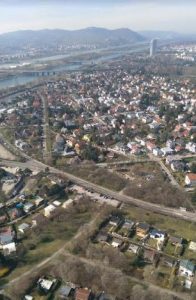Methods for choosing an architect for a project vary considerably. Throwing a dart at a map or flicking through the web, phoning the R.I.A.I. (Royal institute of the Architects of Ireland) or by listening the friends who themselves have gone through the process. All are valid to some degree, but whether you wish for the best experience or the best result the process should be undertaken carefully.
Signature architects have a particular style while others often do not. Should a particular style resonate with your requirements and character, choosing a signature architect may be appropriate. If you are unsure of the style that most suits you, the process is more complex. Many of the images we see on TV, the internet or in magazines are images that suit the needs and reflect the character of other people. Choose an architect who matches your needs, who resonates with your requirements or who at the very least listens and applies your wants. It is our considered opinion that the requirements of architects are always second to those of the client, while applying professional standards and ethics. Clients are our primary concern.
The list of considerations:
- What are your requirements? The most complex projects are often domestic in nature. This is not due to technical complexity, but due to the personal nature of projects and the requirement for carefully considered design. Many commercial, health care, industrial projects are significantly more complex technically and pose many challenges, homes though require a personal touch and very specific skills. Compile a list of your requirements, list rooms and each requirement relating to that space, list hobbies and the space needed to provide for interests. Consider your favourite space in your current home. The project is about you.
- What is your budget? Consider carefully your overall budget. In discussing this with an architect, be mindful that architects often think in terms of the base budget. The base budget is the construction cost before other costs or VAT are added. Express that your budget is your total budget. It is important to understand the interpretation both you and the architect have of budget. Allow a contingency, funds that you hope not to use. This is more important where alterations are being carried out to older buildings, as costs can often not be fully anticipated. Spend wisely. Spending large sums without considering options can be wasteful. The benefits of choosing an architect are far more valuable than the actual cost.
- When do you hope to have the project complete? Smaller projects may be relatively quick, larger projects that require planning permission can take much longer. The fastest project from inception to completion that we have completed in the past ten or so years took seventy days. From inception to completion, this was a small project. Some projects can take years. Architects should advise on a realistic program.
- Is an architect necessary? Seeking at least advice on your project may pay dividends. Many architects work on creating innovative solutions to a wide variety of challenges and may have recommendations that result in savings and in the solution that best suits your needs. It may be possible to repair a broken car yourself, however, starting the process may result in this taking more time, resulting in a lesser standard of completion and at worst requiring that you procure the services of a good mechanic who then may have to repair the repair prior to fixing the car. Choosing an expert often results in a satisfactory job that with design offers solutions that enhance the spaces and enhance life experience.
- Think of the environment! Some of our clients have very carefully examined technologies relating to energy conservation and ecological concerns. This is a valuable exercise. After completing your own research, ask questions about what you have learnt. Architects have been examining these options for years. New options are being developed and it is vital that the science behind these options be understood. Good architects will be familiar with the science of the solution and can advise accordingly.
- Choosing an architect is choosing a relationship, it may last years. A relationship where understanding is important which can often extend beyond the project requires a level of familiarity where all parties are comfortable.
It is not necessary for you, the client, to design the solution. This is what architects are trained to do. Many years are spent in education and training, the minimum in Ireland is seven years (five years in college and at least 2 post graduate internship). The design and technology are parts only of the process. There are also legal and planning related considerations. An architect will advise on the process, the time likely to be incurred and the costs associated. It is vital that the legalities of the project be complied with. Any technologies used are subject to and should comply with building regulations.
We make every effort to satisfy the requirements of our clients, the results of which are a wide range of building character solutions that reflect our clients needs. Our buildings are not designed for us, they are designed for you. Our processes require that we listen carefully such that our carefully considered design solutions achieve your requirements as fully as possible.
Costs associated with employing architects generally present very good value and are based often on a percentage of the base contract value. The total costs can be tailored to individual needs. We do generally advise on what can be achieved but at times advise on adjusting a budget in order to achieve the intention. Initial consultation costs offer great value, we offer a service providing advice based on requirements where we visit the site or building. Subject to location, we offer this service at cost, fuel or mileage and seek a contribution to either The Simon Community or Pieta House. We can discuss this with you prior to providing any service.


St. Stephens Cathedral and view from the Danube Tower Vienna. A recent study trip to Vienna examining the ‘Vienna Model’ for housing. The Vienna Model has recently been studied by Dublin City Council.

